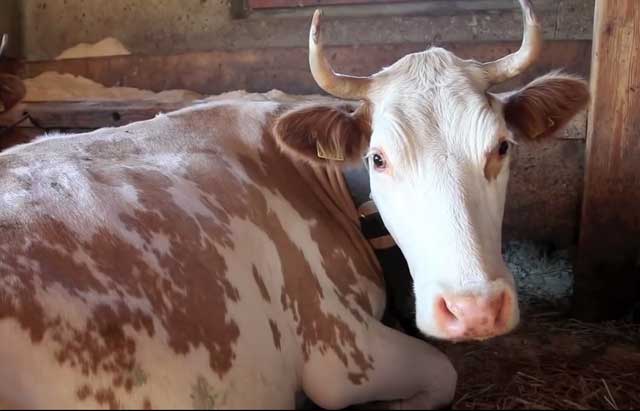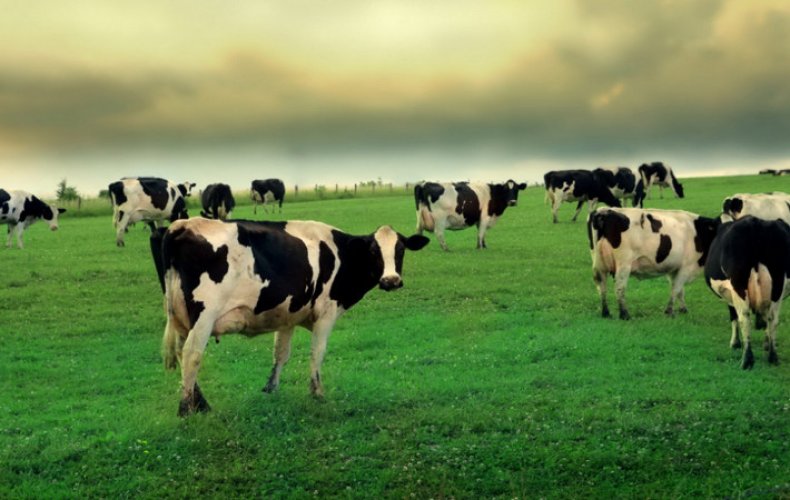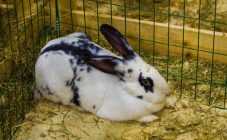Content:
Cattle get sick no less often than other representatives of farm animals, so every livestock breeder should be aware of the rules of first aid in different situations. For example, one of the most common cattle problems is an abscess. This condition not only causes pain in the cow, but can also lead to irreversible consequences. This article will discuss the symptoms and causes of development, methods of treatment.
What is a cow abscess
This concept means an abscess or abscess, which is localized in a certain part of the body. A purulent pathological neoplasm is characterized by a separate cavity, which is filled with white masses formed as a result of inflammation of tissues and organs, for example, loose fiber. It looks like an inflamed lump on the skin. The disease has several varieties:
- aseptic and infectious;
- superficial and deep;
- malignant and benign;
- in a chronic, subacute and acute form of the course;
- drip, cold and metastatic.
Development reasons
Quite often, such tumors form in cows due to damage to the integrity of the skin. Suppuration begins if pathogenic, pathogenic microorganisms have entered the wound. For example, representatives of the group of staphylococci, streptococci and cryptococci, tubercle bacilli, sticks of blue pus. They can penetrate into the body of cattle in several ways:
- When blood is infected during injections, haircuts and other medical procedures (not a common method of infection).
- When mechanical damage is obtained, abscess formation often occurs - the development of a secondary infection. It is worth noting that even small damage can become a favorable environment for the active reproduction of pathogenic bacteria.
- Together with chemicals such as croton oil, kerosene or turpentine.
It doesn't really matter what caused the development of the disease, the approach to treatment is the same everywhere.
Disease symptoms
The initial stage of the development of the disease is the formation of a dense swelling, if you touch the focus of inflammation, it will be warm. If the inflamed area is still light, then as it decays, it will become red and swollen. Around the abscess, the skin is swollen.
The disease in an animal can be of various sizes and located in different places. The focus of inflammation can contain up to 10 liters of pus. Against this background, you can observe changes in the behavior and state of the animal.
Based on stories heard from experienced farmers, the abscess is accompanied by the following symptoms:
- Superficial ulcers, as a rule, go away quickly and on their own. They are opened in most cases without outside intervention; if possible, the site of the abscess should be treated with a disinfectant and anti-inflammatory agent.
- Deep suppurations are much more difficult and painful. This is due to the penetration of purulent masses into the tissues. At times, this becomes a provoking factor in the development of a silent infection.As soon as the cow suffers a viral, infectious or fungal disease, this infection will make itself felt, that is, with the weakening of the animal's protective barrier. There is also blood poisoning, it depends on the size of the lesion.
- After opening, a thick beige mass is released from a benign abscess, exuding an unpleasant sour aroma. Often it is this form that becomes chronic, the focus of inflammation is covered with a dense "crust" and is dormant for a long time.
- With a malignant abscess, the abscesses are painful, the swelling is impressive in size. Pus quite often breaks through the membrane and transforms into phlegmon. It is characterized by a dark color and a strong unpleasant aroma. If the farmer does not act, harmful gas accumulates in the cavity, killing the adjacent tissues.
- Cold inflammation lasts quite a long time; due to the health condition of the cow, one may not even suspect that something is wrong. After a breakthrough, pus may constantly be released from the wound, eventually a hole forms at the site of the abscess.
- A leaky abscess is like a cold one. Such abscesses are usually the result of tuberculosis in the animal. Often a cow develops a lump on the neck, this is an inflammation of the lymph nodes, the body's natural reaction to the penetration of "danger".
- The metastatic form of the disease occurs simultaneously in many parts of the body, this is due to the movement of the pathogenic organism through the blood and lymph. The path lies through the organs of the digestive tract, the brain and the heart wall. In this case, bumps in cows form all over the body, such an abscess is difficult and difficult to treat.
- When chemicals enter the skin, an abscess may develop. Disease-causing organisms die under the influence of, for example, turpentine.
Treatment and prevention methods
Only a veterinarian can confirm or deny the diagnosis. However, before visiting the veterinarian, the farmer can provide first aid to his animal.
Providing first aid
If inflammation is found, you should immediately seek help from a veterinarian, especially if the lesions are extensive. Before providing first aid, the cow must be provided with the most comfortable conditions and rest, temporarily she must be in a separate room with clean bedding. If the cow is not aggressive, then you can try to provide her with first aid:
- It is recommended to warm the formed bumps using alcohol or water lotions. Alternatively, you can use warm therapeutic mud (it is necessary to heat the site of inflammation until it becomes softer and less elastic).
- To alleviate the condition of the animal, you can give him an anesthetic drug.
Health care
The approach to the treatment of an abscess is always individual, the veterinarian relies on the well-being of the animal and the course of a specific form of the disease. For example, in the course of mild forms of abscess, it is enough to make a novocaine blockade. Give injections near the inflamed area with a solution of penicillin and novocaine.
If necessary, a similar injection is injected directly under the abscess. Having correctly carried out all the preparatory procedures, the doctor will be able to open the abscess, which is very important for cleansing the wound from purulent masses.
If the lesions are large, then it is advisable to carry out several other activities. At the initial stage, using a special tube, purulent masses are pumped out, after which the open wound is treated with antibiotics.
Deep abscesses also need to be cut open. A sterile needle is inserted into the abscess cavity, thanks to which the cavity is freed from dead cells. After the blood stops, the wound is treated with antiseptics and wound-healing ointments.
For the treatment of an abscess in cows, drugs such as Genta100, ASD3, Desi spray and Dorogova's balm are often used.
Preventive actions
Abscesses cannot appear quickly, so it is very important to diagnose the disease at an early stage of its development. To exclude the likelihood of the growth of inflammation, you need to pay attention to preventive measures:
- After a walk, the skin of the animals should be carefully examined, if time permits, it is also necessary to feel it with your hands (an abscess is manifested by compaction).
- Any mechanical damage, violation of the integrity of the skin should be treated with special antiseptic preparations.
- Cows should always have clean and dry bedding, because pathogens often accumulate in the old layers, contributing to the development of various ailments.
- When sending cows to pasture, it is necessary to ensure that the place is deserted, without insects and bushes.
With proper care, the likelihood of developing an abscess is much less. However, if this trouble was still diagnosed, you should not self-medicate. It is important to call your veterinarian immediately, who will do whatever is necessary. If such a possibility is excluded, then the treatment must be agreed with the veterinarian using the phone. If you miss the moment, the development and spread of the abscess can lead to irreversible and fatal outcomes, the animal can simply die.

















